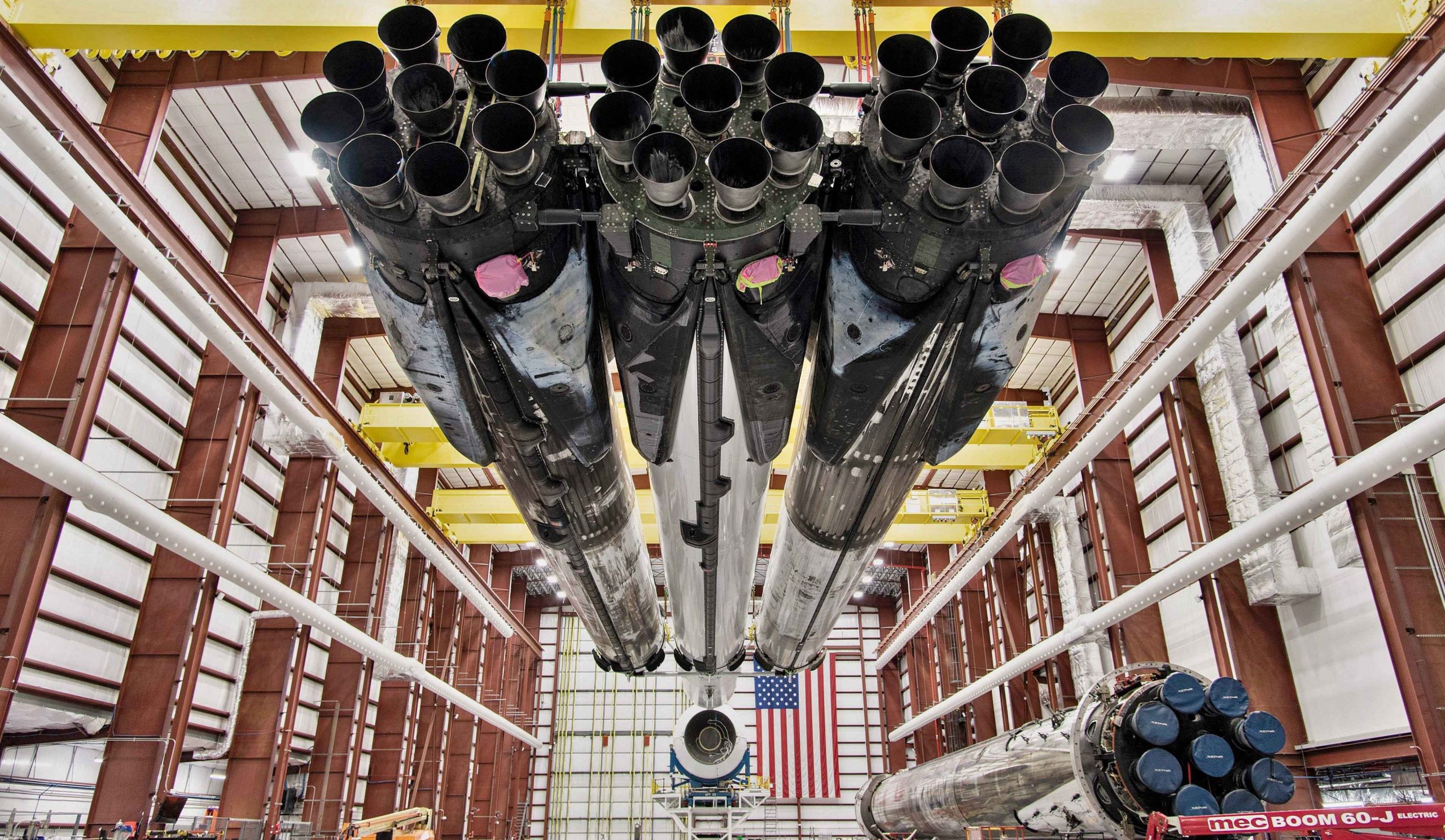
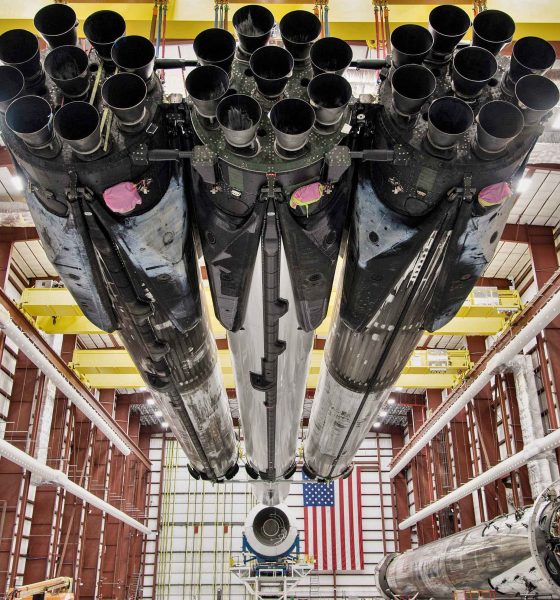
News
SpaceX’s next Falcon Heavy launch on track to carry multiple military satellites
According to one of the US Space Force 44 (USSF-44) mission’s satellite providers, SpaceX’s next Falcon Heavy launch remains on track for late 2020 and will apparently be carrying more than one military satellite to orbit.
Successfully launched just 73 days apart in April and June 2019, SpaceX already has two twice-flown Falcon Heavy side boosters in storage somewhere in Cape Canaveral, Florida, raising the possibility that one or several of the rocket’s next launches could reuse those some boosters. However, NASASpaceflight.com has already confirmed that all three Falcon Heavy Flight 4 boosters will be new, likely representing 25-30%+ of all of SpaceX’s 2020 booster production output.
That also means that publicly-visible Falcon Heavy Flight 4 launch preparations will start much sooner than later as SpaceX works to ship its new boosters from its Hawthorne, California factory to McGregor, Texas for routine acceptance testing and finally to launch facilities in Florida.
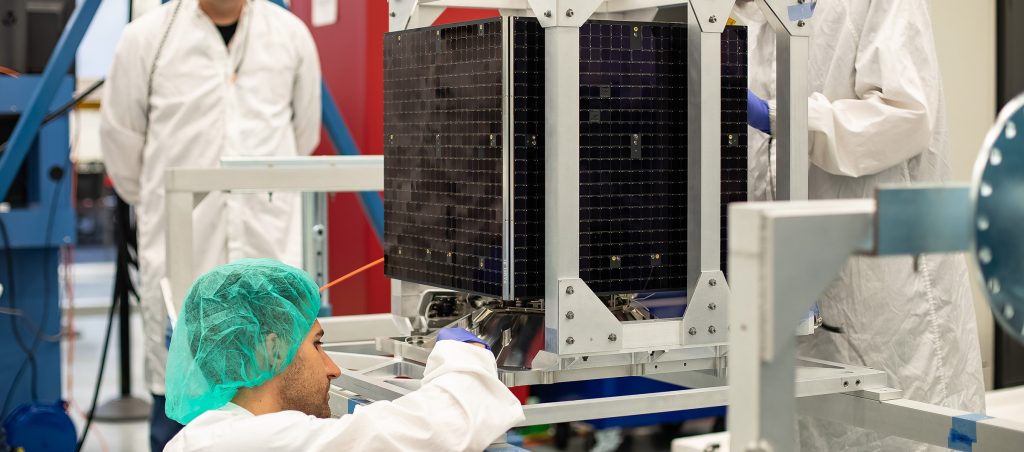
Based on SpaceX’s first Falcon Heavy Block 5 launch, completed on April 11th, 2019, the next rocket’s three new boosters should begin arriving in Florida by mid-2020 – perhaps just a month or two from now. Prior to Arabsat 6A’s commercial Falcon Heavy launch debut, the first of the rocket’s boosters completed acceptance testing in McGregor, Texas and arrived at Kennedy Space Center (KSC) around mid-December 2018 – a bit less than four months before liftoff.
Per NASASpaceflight’s confirmation that all-new boosters are assigned to USSF-44, it’s also true that the mission will mark the second time SpaceX has completed serial production and delivery of a complete Falcon Heavy rocket. With that first-time pathfinder run already behind SpaceX thanks to its April 2019 Arabsat 6A launch, it’s likely that manufacturing and acceptance testing will be much more streamlined, while also reducing the amount of time it will take the rocket to go from Florida arrival to lift-off.
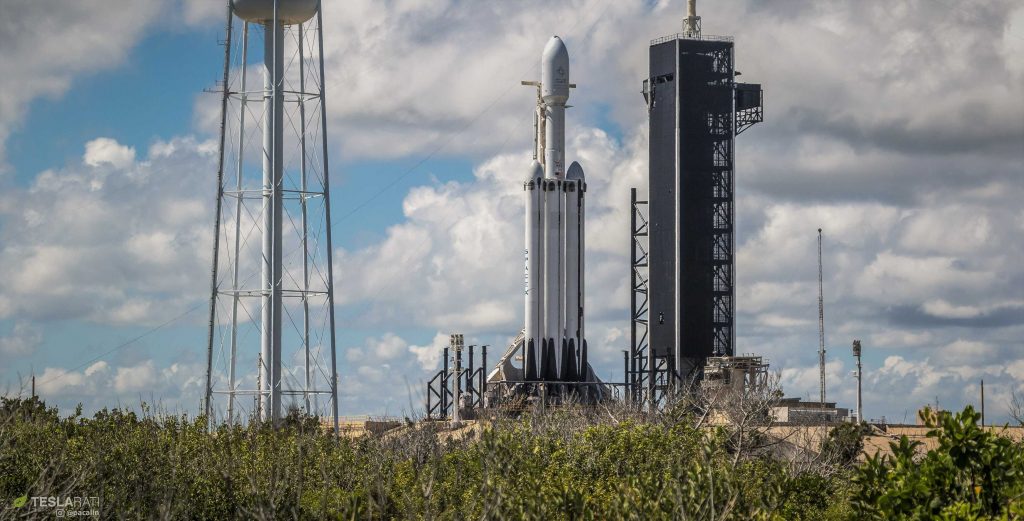
USSF-44 is on track to become SpaceX’s first operational Falcon Heavy launch for the US government some 15-18 months after the company successfully completed STP-2 – a certification test flight for the US Air Force – in June 2019. While some work reportedly remains before SpaceX’s super heavy-lift rocket can be considered fully certified for high-value US military launches, Millenium Space’s April 21st update states that Falcon Heavy’s USSF-44 mission is still on track to “launch in late 2020”.
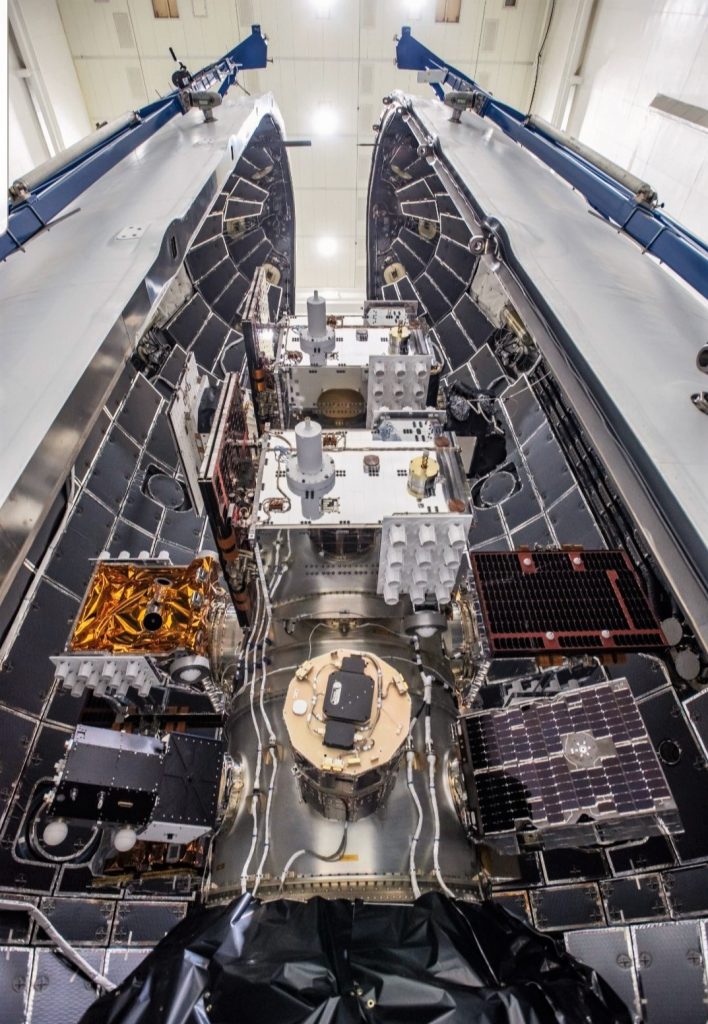
Given that SpaceX is likely in the midst of Falcon Heavy Flight 4 booster production and could begin delivering hardware to Florida just 2-3 months from now, Millenium Space’s comment strongly implies that launch preparations are proceeding smoothly. If SpaceX still needs to complete one or several certification milestones, both it and the US military clearly have a firm plan and are confident that Falcon Heavy can be certified by Q4 2020.
SpaceX also appears to be supporting the US military’s relatively frequent addition of small secondary satellites – often prototypes meant to test new technologies or strategies – on large launches. Whether SpaceX will add secondary dispensers to the rocket’s upper stage or the ~3.7 metric ton (~8200 lb) USSF-44 satellite deploys them itself remains to be seen, but the mission will carry at least one other passenger (TETRA-1). If past US military launches are anything to go by, at least one or two other smaller satellites may also hitch a ride on Falcon Heavy later this year.

News
Tesla FSD fleet is nearing 7 billion total miles, including 2.5 billion city miles
As can be seen on Tesla’s official FSD webpage, vehicles equipped with the system have now navigated over 6.99 billion miles.

Tesla’s Full Self-Driving (Supervised) fleet is closing in on almost 7 billion total miles driven, as per data posted by the company on its official FSD webpage.
These figures hint at the massive scale of data fueling Tesla’s rapid FSD improvements, which have been quite notable as of late.
FSD mileage milestones
As can be seen on Tesla’s official FSD webpage, vehicles equipped with the system have now navigated over 6.99 billion miles. Tesla owner and avid FSD tester Whole Mars Catalog also shared a screenshot indicating that from the nearly 7 billion miles traveled by the FSD fleet, more than 2.5 billion miles were driven inside cities.
City miles are particularly valuable for complex urban scenarios like unprotected turns, pedestrian interactions, and traffic lights. This is also the difference-maker for FSD, as only complex solutions, such as Waymo’s self-driving taxis, operate similarly on inner-city streets. And even then, incidents such as the San Francisco blackouts have proven challenging for sensor-rich vehicles like Waymos.
Tesla’s data edge
Tesla has a number of advantages in the autonomous vehicle sector, one of which is the size of its fleet and the number of vehicles training FSD on real-world roads. Tesla’s nearly 7 billion FSD miles then allow the company to roll out updates that make its vehicles behave like they are being driven by experienced drivers, even if they are operating on their own.
So notable are Tesla’s improvements to FSD that NVIDIA Director of Robotics Jim Fan, after experiencing FSD v14, noted that the system is the first AI that passes what he described as a “Physical Turing Test.”
“Despite knowing exactly how robot learning works, I still find it magical watching the steering wheel turn by itself. First it feels surreal, next it becomes routine. Then, like the smartphone, taking it away actively hurts. This is how humanity gets rewired and glued to god-like technologies,” Fan wrote in a post on X.
News
Tesla starts showing how FSD will change lives in Europe
Local officials tested the system on narrow country roads and were impressed by FSD’s smooth, human-like driving, with some calling the service a game-changer for everyday life in areas that are far from urban centers.

Tesla has launched Europe’s first public shuttle service using Full Self-Driving (Supervised) in the rural Eifelkreis Bitburg-Prüm region of Germany, demonstrating how the technology can restore independence and mobility for people who struggle with limited transport options.
Local officials tested the system on narrow country roads and were impressed by FSD’s smooth, human-like driving, with some calling the service a game-changer for everyday life in areas that are far from urban centers.
Officials see real impact on rural residents
Arzfeld Mayor Johannes Kuhl and District Administrator Andreas Kruppert personally tested the Tesla shuttle service. This allowed them to see just how well FSD navigated winding lanes and rural roads confidently. Kruppert said, “Autonomous driving sounds like science fiction to many, but we simply see here that it works totally well in rural regions too.” Kuhl, for his part, also noted that FSD “feels like a very experienced driver.”
The pilot complements the area’s “Citizen Bus” program, which provides on-demand rides for elderly residents who can no longer drive themselves. Tesla Europe shared a video of a demonstration of the service, highlighting how FSD gives people their freedom back, even in places where public transport is not as prevalent.
What the Ministry for Economic Affairs and Transport says
Rhineland-Palatinate’s Minister Daniela Schmitt supported the project, praising the collaboration that made this “first of its kind in Europe” possible. As per the ministry, the rural rollout for the service shows FSD’s potential beyond major cities, and it delivers tangible benefits like grocery runs, doctor visits, and social connections for isolated residents.
“Reliable and flexible mobility is especially vital in rural areas. With the launch of a shuttle service using self-driving vehicles (FSD supervised) by Tesla in the Eifelkreis Bitburg-Prüm, an innovative pilot project is now getting underway that complements local community bus services. It is the first project of its kind in Europe.
“The result is a real gain for rural mobility: greater accessibility, more flexibility and tangible benefits for everyday life. A strong signal for innovation, cooperation and future-oriented mobility beyond urban centers,” the ministry wrote in a LinkedIn post.
News
Tesla China quietly posts Robotaxi-related job listing
Tesla China is currently seeking a Low Voltage Electrical Engineer to work on circuit board design for the company’s autonomous vehicles.

Tesla has posted a new job listing in Shanghai explicitly tied to its Robotaxi program, fueling speculation that the company is preparing to launch its dedicated autonomous ride-hailing service in China.
As noted in the listing, Tesla China is currently seeking a Low Voltage Electrical Engineer to work on circuit board design for the company’s autonomous vehicles.
Robotaxi-specific role
The listing, which was shared on social media platform X by industry watcher @tslaming, suggested that Tesla China is looking to fill the role urgently. The job listing itself specifically mentions that the person hired for the role will be working on the Low Voltage Hardware team, which would design the circuit boards that would serve as the nervous system of the Robotaxi.
Key tasks for the role, as indicated in the job listing, include collaboration with PCB layout, firmware, mechanical, program management, and validation teams, among other responsibilities. The role is based in Shanghai.
China Robotaxi launch
China represents a massive potential market for robotaxis, with its dense urban centers and supportive policies in select cities. Tesla has limited permission to roll out FSD in the country, though despite this, its vehicles have been hailed as among the best in the market when it comes to autonomous features. So far, at least, it appears that China supports Tesla’s FSD and Robotaxi rollout.
This was hinted at in November, when Tesla brought the Cybercab to the 8th China International Import Expo (CIIE) in Shanghai, marking the first time that the autonomous two-seater was brought to the Asia-Pacific region. The vehicle, despite not having a release date in China, received a significant amount of interest among the event’s attendees.








